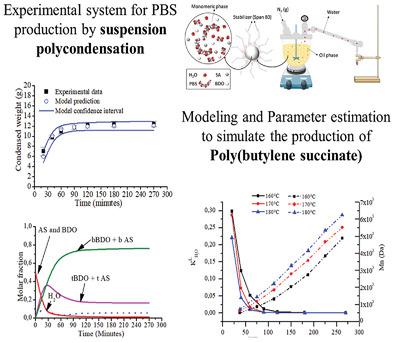当前位置:
X-MOL 学术
›
Macromol. React. Eng.
›
论文详情
Our official English website, www.x-mol.net, welcomes your feedback! (Note: you will need to create a separate account there.)
Preparation of Polymer Microparticles through Nonaqueous Suspension Polycondensations: Part V—Modeling and Parameter Estimation for Poly(butylene succinate) Polycondensations
Macromolecular Reaction Engineering ( IF 1.5 ) Pub Date : 2020-05-28 , DOI: 10.1002/mren.202000007 Luciana Dutra 1 , Bruno F. Oechsler 2 , Amanda L. T. Brandão 3 , Rafael C. Lima 1 , Marcio Nele 1 , José Carlos Pinto 1, 4
Macromolecular Reaction Engineering ( IF 1.5 ) Pub Date : 2020-05-28 , DOI: 10.1002/mren.202000007 Luciana Dutra 1 , Bruno F. Oechsler 2 , Amanda L. T. Brandão 3 , Rafael C. Lima 1 , Marcio Nele 1 , José Carlos Pinto 1, 4
Affiliation

|
Polycondensation polymers are normally produced through bulk and solution polymerization processes, which are characterized by significant mass and heat transfer constraints and difficult polymer purification (when prepared in solution). Therefore, it is desirable to develop industrial processes that can circumvent some of these limitations. Recently, a suspension polycondensation process has been developed, rendering the industrial process simpler and enabling the manufacture of polycondensation polymer microparticles. For this reason, the present work builds a phenomenological model to describe the analyzed suspension polycondensation reactions and estimate the model parameters required to simulate poly(butylene succinate) suspension polycondensations. It is shown that both the suspending medium and the reaction conditions can affect the mass transfer resistance for removal of water and that mass transfer rate coefficients are controlled mainly by reaction temperature and solubility of water in the suspending medium, leading to higher mass transfer rates when polymerizations are carried out in soybean oil (when compared to paraffin) at higher temperatures.
中文翻译:

通过非水悬浮缩聚制备聚合物微粒:第五部分—聚丁二酸丁二醇酯缩聚的建模和参数估算
缩聚聚合物通常通过本体和溶液聚合过程生产,其特征在于明显的质量和传热限制以及难以纯化的聚合物(当在溶液中制备时)。因此,期望开发可以规避这些局限性的工业方法。近来,已经开发了悬浮缩聚方法,这使得工业过程更简单并且使得能够制造缩聚聚合物微粒。因此,本工作建立了一个现象学模型来描述所分析的悬浮液缩聚反应,并估算了模拟聚丁二酸丁二醇酯悬浮液缩聚所需的模型参数。
更新日期:2020-05-28
中文翻译:

通过非水悬浮缩聚制备聚合物微粒:第五部分—聚丁二酸丁二醇酯缩聚的建模和参数估算
缩聚聚合物通常通过本体和溶液聚合过程生产,其特征在于明显的质量和传热限制以及难以纯化的聚合物(当在溶液中制备时)。因此,期望开发可以规避这些局限性的工业方法。近来,已经开发了悬浮缩聚方法,这使得工业过程更简单并且使得能够制造缩聚聚合物微粒。因此,本工作建立了一个现象学模型来描述所分析的悬浮液缩聚反应,并估算了模拟聚丁二酸丁二醇酯悬浮液缩聚所需的模型参数。



























 京公网安备 11010802027423号
京公网安备 11010802027423号